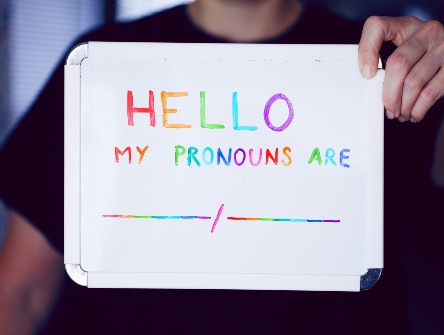Courts are not substitutes for human rights tribunals
The latter are particularly well adapted to deal with cases involving children.

Last month, the Assembly of First Nations and the Attorney General of Canada agreed to a settlement to compensate victims harmed by discriminatory underfunding by the federal government of the First Nations Child and Family Services program. The Canadian Human Rights Tribunal has yet to rule on a motion asking it whether the settlement satisfies its own orders on compensation, rendered in 2016. If it doesn’t, the parties are asking the Tribunal to vary those orders.
If the motion is granted, it will have wider implication on the human rights system in this country. It should buttress the argument that human rights regimes are the proper forum to adjudicate discrimination claims involving children and human rights tribunals in Canada. My own view, informed by decades of experience and expertise in statutory human rights in Canada and children’s rights, is that we should refrain from allowing civil courts to act as a substitute for the human rights regime.
Generally, the implementation of domestic human rights systems in Canada followed World War II when the world witnessed wide-scale atrocities rooted in discrimination. This prompted the international community to set up a coordinated system to ensure the respect of human rights. From the beginning, the right to non-discrimination was recognized as a bedrock of human rights and protecting them was understood as necessary for maintaining peace. For example, the Universal Declaration on Human Rights proclaimed that all humans are born equally free and that all are entitled to human rights free from discrimination. The UDHR is widely recognized as having inspired, and paved the way for, the adoption of more than 70 human rights-related treaties.
This increased international support for human rights protection coincided with a wave of human rights legislation across Canada. Saskatchewan and Alberta enacted pioneering laws. However, it was Ontario that started the trend of establishing a compressive regime focused strictly on eradicating discrimination and that included an accessible complaint mechanism. The federal government created a full federal regime in 1977 with the passing of the Canadian Human Rights Act. This offered protection from discrimination on several grounds.
Human rights regimes are different from courts in several important ways. These differences lie in the fact that human rights regimes exist to eradicate discrimination, which is recognized as a social wrong. In other words, human rights regimes are founded on the notion that there is a public interest in resolving complaints about discrimination. In the federal human rights system, all settlement agreements must be referred and approved by the Commission. Even though such agreements may be between private parties, there is a public interest in ensuring that they are fair in light of the imbalance of power between the parties and the public harm caused by discrimination.
Human rights regimes across the country, particularly when compared to civil courts, are also specifically tailored to meet the needs of victims of discrimination. One difference relates to the role of commissions. In many human rights regimes in Canada, they play an active role in promoting and raising awareness regarding human rights but also in investigating complaints and representing the public interest before tribunals and courts. State funding of commissions to speak to potential witnesses, to gather evidence, to develop a theory of a case and to represent the public interest in cases before tribunal underscores the difference between human rights regimes and civil actions. Furthermore, websites of both human rights commissions and tribunals generally contain easy-to-read guides, Q&A sheets, case studies and other information in accessible formats. Put simply, the entire design of human rights regimes aims to make them accessible to individuals, including children, from various backgrounds and with different needs.
Similarly, the adjudication processes before human rights tribunals are generally more flexible and tailored to the unique needs of litigants from historically disadvantaged groups.
Rules of procedure are also more flexible. Unlike judges, tribunal members, who are experts in human rights, are not bound by traditional rules of evidence. Moreover, in nearly all jurisdictions, the rules of procedure of human rights tribunals expressly contemplate the need to reasonably accommodate the various needs of litigants in an adjudication.
It is because of their inherent flexibility that human rights tribunals are particularly well adapted to deal with cases involving children. The Caring Society v Canada litigation is often cited as a leading example of child-friendly legal proceedings. The panel adjudicated the complaint in a manner that reveals a praiseworthy sensitivity to children’s rights. I am aware of no court case in Canada in which such a concern was shown to access to justice for children. Active participation is a key tenant of children’s access to justice. By ensuring that physical space was set aside for children, the CHRT promoted children’s right to participate and remain informed in a hearing that impacted their rights. Allowing the recording and the broadcasting of the hearing was equally significant in that it permitted children from across the county, and from all socio-economic backgrounds, to follow the litigation.
On a more substantive level, the CHRT’s reasons in its decisions are also noteworthy. By consistently considering the best interest of the child in its reasons, the CHRT’s interpretation of the Canadian Human Rights Act is in keeping with Canada’s international human rights law obligations towards children. It also did this by not requiring children to testify, and to risk re-traumatization, in order to be eligible for compensation.
Having studied Canada’s human rights regimes throughout my career, I believe it is crucial for human rights tribunals to stake their ground and guard against civil courts encroachment over their jurisdiction. We designed human rights regimes to have exclusive judication over discrimination claims as first held in Seneca College of Applied Arts and Technology v. Bhadauria and more recently affirmed in Honda Canada Inc. v. Keays. They are meant to offer comprehensive protection over discrimination complaints.
Allowing settlement agreements reached in the context of a civil claim could have unintended consequences. First, as echoed by Justice Abella in Honda v Keays, allowing civil claims to act as a substitute for human rights complaints could erode the human rights regime and cause confusion. Victims need to know where to go to have their allegations of discrimination treated by experts in a manner that takes into account their needs. Parliament has created the federal human rights regime to do just that.
Second, allowing outside parties to reach deals with respondents that can seek to invalidate human rights orders can cause a host of problems. It places complainants in an unfair position of having to defend for a second time a hard-fought victory before the human rights tribunal. Though the human rights system is meant to be more accessible than courts, successful complainants are not entitled to their legal fees and compensation is capped. Many complainants don’t have the resources to hire a lawyer to defend a compensation order they obtained before the Tribunal. As the Commission need not approve agreements arising from a civil action, no party in private settlement agreements has the express mandate of protecting the public interest. More broadly, this motion raises important questions about the finality of tribunal orders. The fact that a decision from the Tribunal that recognizes the right to compensation of right holders can be invalidated without their express consent could undermine public trust in the human rights regime. Human rights culture in Canada is best protected when the public knows that orders from tribunals are enforceable, legally binding and non-negotiable.
We created human rights regimes with the distinct purpose of adjudicating discrimination complaints in a manner that protects the public interest and recognizes the social harm caused by discrimination. The Tribunal ought to maintain the finality of its compensation orders so that victims of discrimination in Canada know that the regime is the appropriate, fair and flexible forum where they can bring their claims.


